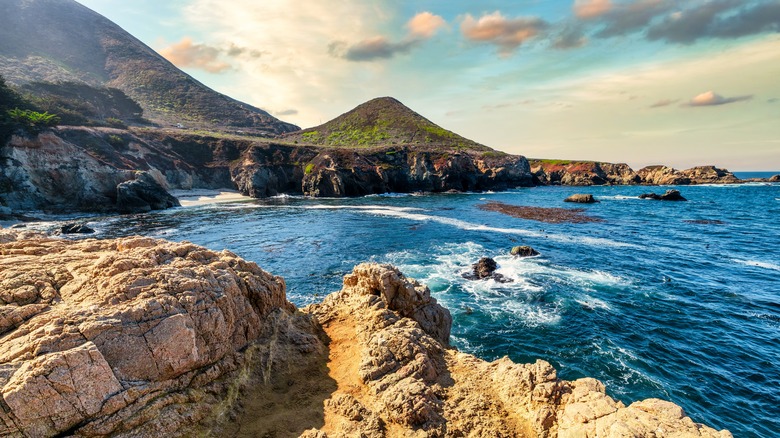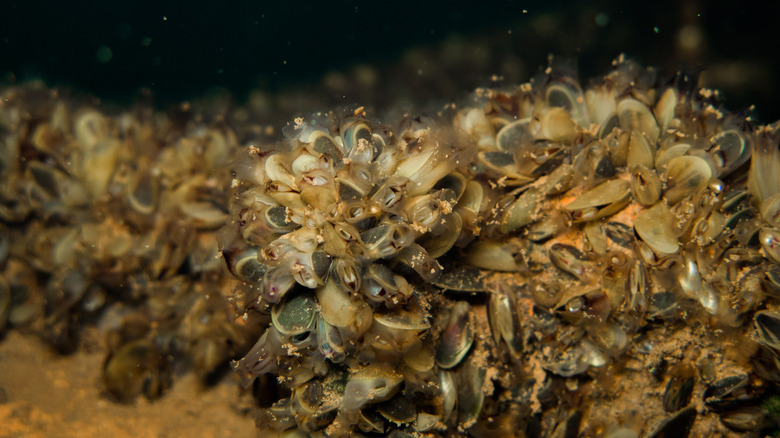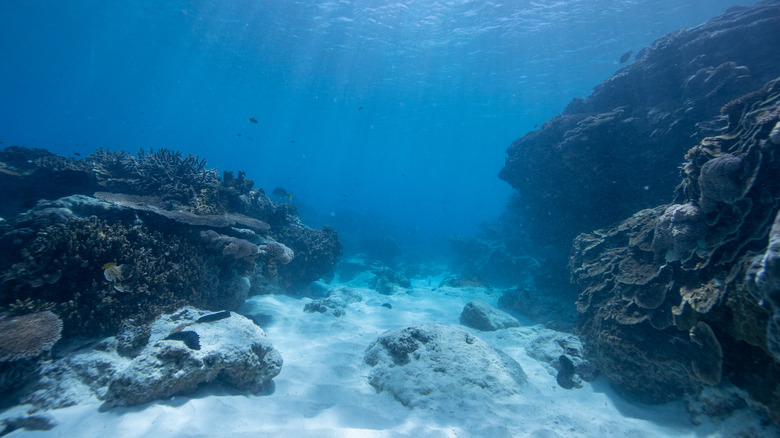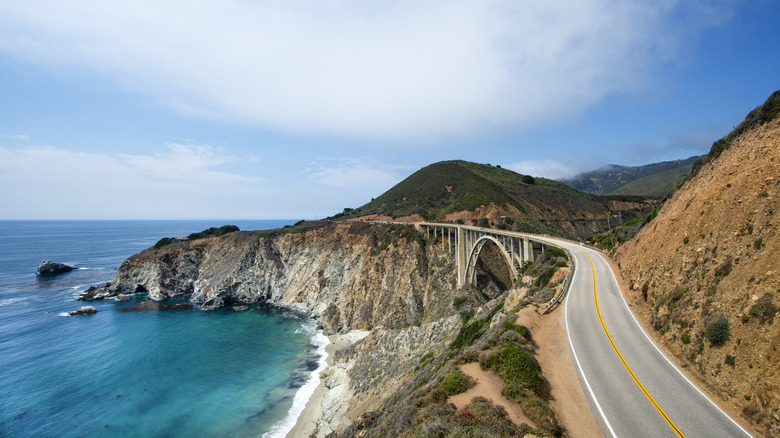The Invasive Species California Is Battling That's An Immediate Threat
The U.S. is currently battling literally thousands of invasive species from the wild boars that are destroying Texas to the Emerald Ash Borer insects that have wiped out millions of Ash trees across the North of the country. These invaders pose major risks to the nation, and it's not just about their impact on native wildlife and plant life. Invasive species can cause major economic damage, too, either by forcing authorities to spend millions on containment efforts or by directly impacting specific industries.
Over on the West Coast, California is doing its best to fend off hundreds of exotic pests, from mute swans to mudsnails. The list of invasive species wreaking havoc in California is alarmingly long, and now a newly discovered invader is posing an immediate threat to the Golden State.
This latest invasive menace not only represents a significant new problem for California, but the country as a whole. Should this latest threat remain unconfined, it could spread throughout the nation, making containment efforts not only necessary but crucial.
The new invasive threat facing California
Species are considered invasive if they are non-native to the environment in which they're found and if they become pests — i.e. they establish themselves in an area to the detriment of other native wildlife and cause environmental and economic damage. California is the most ecologically diverse state in the country, which makes it both a stunningly beautiful area of the country and a haven for all manner of non-indigenous species.
The Golden State has already had major problems with a multitude of invaders, but in 2024, a new threat was discovered in the Sacramento — San Joaquin Delta. In November 2024, non-native golden mussels were found in the Port of Stockton by California Department of Water Resources staff. Not only does this mark the first incidence of the mussels in California, but the first known occurrence of the species in North America.
The golden mussels are native to China and Southeast Asia and are thought to have been brought to California by an international ship that travelled to the port, though exactly when and how this happened remains unclear. But what exactly makes these freshwater bivalve molluscs such a threat to California, and potentially the nation?
Why are golden mussels a problem for California?
Golden mussels look very similar to two other invasive species already present in California: quagga and zebra mussels. Measuring roughly 1.5 inches in length, the golden mussels are, as their name suggests, a light golden color, though some are a darker yellowish-brown. Much like their quagga and zebra counterparts, golden mussels don't pose one single threat to California, but rather multiple.
The newly-discovered mussels currently pose a major threat to the natural ecosystems, water conveyance systems, infrastructure, and water quality in California. How? Well, firstly, they gather together in large encrustations which comprise as many as 80,000 to 200,000 mussels per square meter, meaning they can easily block water pipes and intakes. That means that pipelines carrying drinking water throughout California could become compromised. Aside from causing obvious issues with the flow of water, these blockages can be expensive to remove — a reminder that invasive species don't just endanger other organisms and damage ecosystems, but can have significant economic consequences. That's just the beginning of the issues that golden mussels could bring to California, too.
Golden mussels throw natural habitats into chaos
As well as causing significant problems for water conveyance systems, golden mussels can cause significant and major harm to native species. They are filter feeders, which means they consume water and feed on the organic particles therein, and can consume large amounts of the microscopic plants and animals on which existing species depend, robbing those native species of their sustenance and throwing ecosystems into disarray. Adult golden mussels consume phytoplankton, zooplankton, and organic matter, and their larvae feed on bacteria. As a result of this voracious and diverse appetite, native species can be driven out of a particular water body due to a lack of their natural food.
That's not the only way in which golden mussels impact natural environments, either. The invaders also increase water clarity, which might sound like a good thing, but very much isn't. As a 2022 study published in Ecological Indicators explains, bivalves such as this species degrade water quality as a result of their "intensive filter-feeding and metabolism." In other words, the increase in water clarity comes from the fact the mussels are filtering out all the organic matter suspended in the water on which other species rely, then "depositing feces" and increasing the ammonia, nitrate, and phosphate levels of the water.
As if that wasn't enough, golden mussels impact the bacterial content of water, with live specimens modifying bacteria through filtering and symbiosis and dead mussels encouraging bacteria to grow as they spoil. All of this causes shifts in the natural environment that can have significant impacts on existing wildlife.
The economic impact of golden mussels
As with all difficult invasive species, golden mussels pose an economic threat. Aside from the expenses associated with cleaning the species out of water intakes and pipelines, the mussels can have negatively impact recreational opportunities; the species can encrust docks and beaches and colonize recreational equipment, from the hulls of boats and other watercraft to their engines and steering equipment. All of this comes with economic considerations associated with recreation being reduced and cleaning costs.
The California Department of Fish and Wildlife doesn't track specific financial impact of invasive mussels but notes that in 2009, quagga and zebra mussels — already well-established in the Golden State — cost the Great Lakes region an estimated $500 million per year to manage at power plants, water systems, industrial complexes, and on boats and docks. The economic impact of golden mussels in California is yet to be calculated, but considering the wide range of issues these invaders cause, it will no doubt be a significant figure.
Will California be able to wipe out the golden mussel?
With golden mussels posing such a diverse range of issues for the Golden State, efforts to reduce their numbers are of the utmost importance. But ridding California of this particular invader is not going to be easy.
The mussels tolerate a wide range of water conditions, surviving not only in waters that have low pH and calcium levels but also in heated, polluted, and even contaminated water. They can also reproduce incredibly quickly, especially in California's warmer climate which provides a fertile breeding ground for the mussels' larvae. All of which makes managing the invasion much more difficult, yet containment is crucial to prevent the species from spreading and throwing more and more habitats into disarray.
Authorities are relying on citizens to report sightings of golden mussels in order to help efforts to eradicate the species, with the California Department of Fish and Wildlife urging residents to clean and dry any type of watercraft and associate equipment after removing them from the water, in order to discourage the spread. Whether those efforts will be enough, however, remains to be seen.





